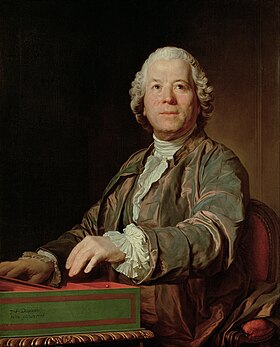Wikipedia:Main Page history/2018 July 2
From today's featured articleThe Monroe Doctrine Centennial half dollar was an American fifty-cent piece struck at the San Francisco Mint in 1923, bearing portraits of former presidents James Monroe and John Quincy Adams. Sculptor Chester Beach is credited with the design, although the reverse closely resembles an earlier work by Raphael Beck. The commemorative coin was issued to raise funds for an exposition in Los Angeles honoring the 100th anniversary of the Monroe Doctrine; the event was organized in part to generate good press for Hollywood during a time of highly publicized scandals, including manslaughter charges against film star Roscoe "Fatty" Arbuckle. The exposition was a financial failure. The coins did not sell well, and the bulk of the mintage of over 270,000 was released into circulation. Many of the pieces that had been sold at a premium and saved were spent during the Depression; most surviving coins show evidence of wear. (Full article...)
Recently featured:
Did you know...
|
In the news
On this day
Denmark Vesey (d. 1822) · Harriet Brooks (b. 1876) · Ernest Hemingway (d. 1961) |
From today's featured list
The English author, humorist and scriptwriter P. G. Wodehouse created several regular comic characters with whom the public became familiar. These include Bertie Wooster and his valet Jeeves; the immaculate and loquacious Psmith; Lord Emsworth and the Blandings Castle set; the disaster-prone opportunist Ukridge; the Oldest Member, with stories about golf; and Mr Mulliner, with tales on numerous subjects from film studios to the Church of England. Wodehouse also wrote scripts and screenplays and, in August 1911, his script A Gentleman of Leisure was produced on the Broadway stage. In the 1920s and 1930s he collaborated with Jerome Kern and Guy Bolton in an arrangement that "helped transform the American musical" of the time. His writing for plays also turned into scriptwriting, starting with the 1915 film A Gentleman of Leisure. He joined Metro-Goldwyn-Mayer (MGM) in 1930 for a year, and then worked for RKO Pictures in 1937. (Full list...)
Today's featured picture

|
Christoph Willibald Gluck (1714–1787) was a composer of Italian and French opera in the early classical period. Rising to prominence at the Habsburg court in Vienna, he challenged the dominant Metastasian opera seria by introducing more drama and cutting the da capo aria with a series of works in the 1760s, among them Orfeo ed Euridice and Alceste. After moving to Paris in 1773, he fused the Italian and French traditions in eight operas. Of these, Iphigénie en Tauride is generally acknowledged as his finest work. Painting: Joseph Siffred Duplessis
Recently featured:
|
Other areas of Wikipedia
- Community portal – Bulletin board, projects, resources and activities covering a wide range of Wikipedia areas.
- Help desk – Ask questions about using Wikipedia.
- Local embassy – For Wikipedia-related communication in languages other than English.
- Reference desk – Serving as virtual librarians, Wikipedia volunteers tackle your questions on a wide range of subjects.
- Site news – Announcements, updates, articles and press releases on Wikipedia and the Wikimedia Foundation.
- Village pump – For discussions about Wikipedia itself, including areas for technical issues and policies.
Wikipedia's sister projects
Wikipedia is hosted by the Wikimedia Foundation, a non-profit organization that also hosts a range of other projects:
| |
Commons Free media repository |
|
MediaWiki Wiki software development |
|
Meta-Wiki Wikimedia project coordination |
| |
Wikibooks Free textbooks and manuals |
|
Wikidata Free knowledge base |
|
Wikinews Free-content news |
| |
Wikiquote Collection of quotations |
|
Wikisource Free-content library |
|
Wikispecies Directory of species |
| |
Wikiversity Free learning materials and activities |
|
Wikivoyage Free travel guide |
|
Wiktionary Dictionary and thesaurus |





